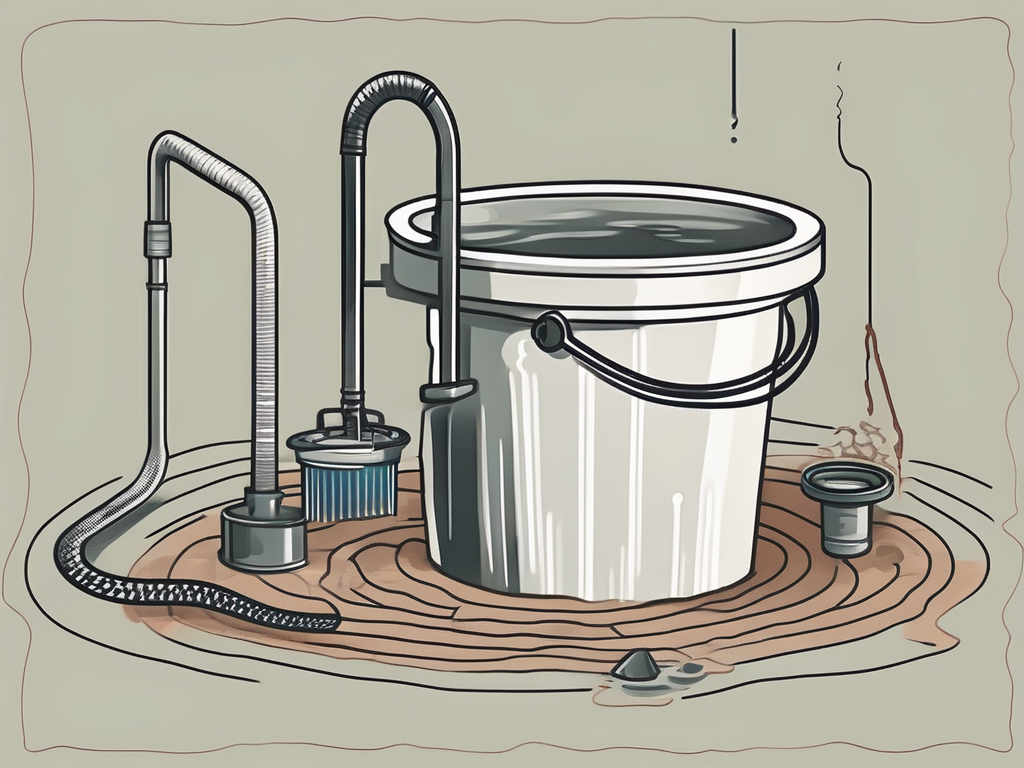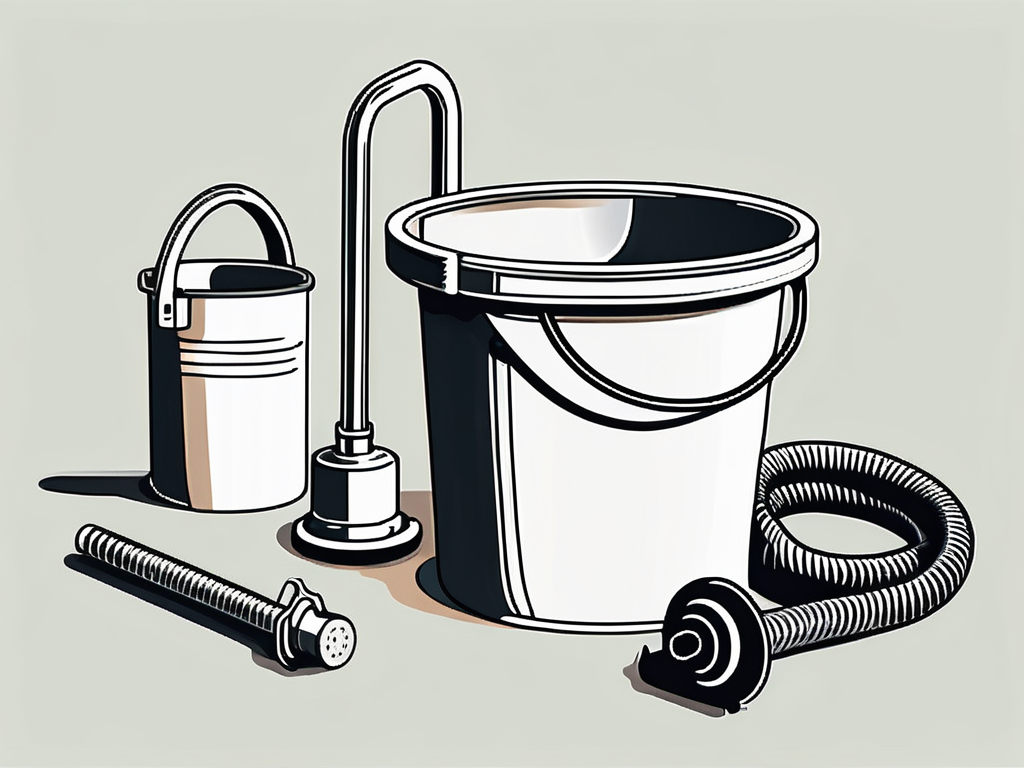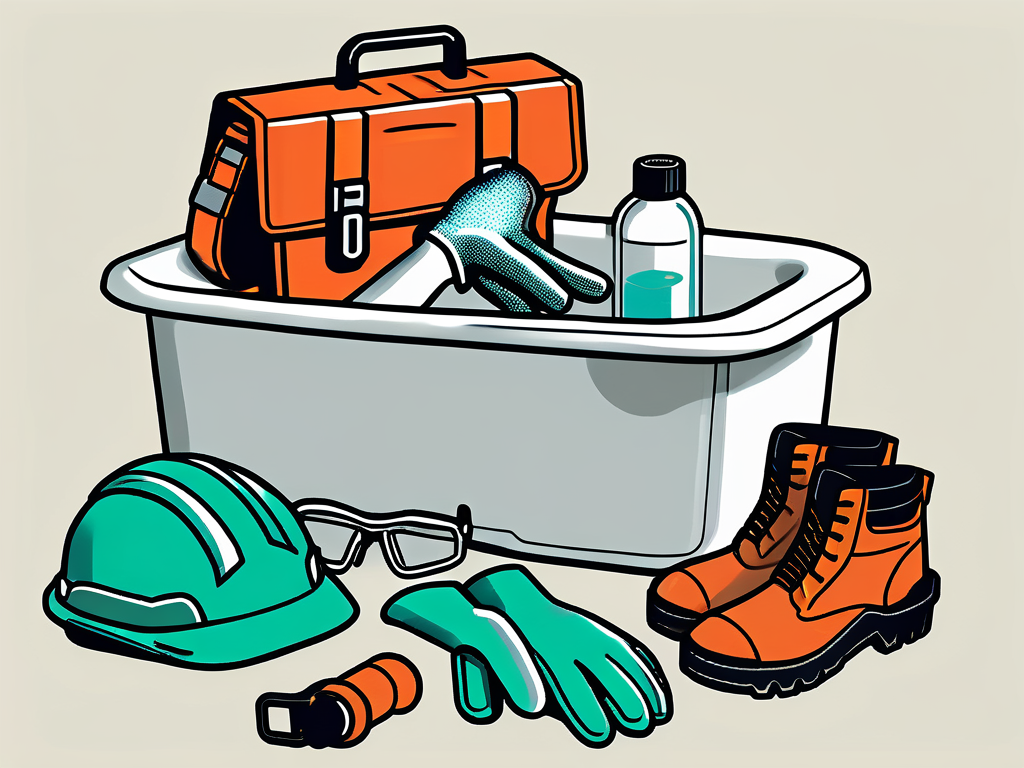
How to Effectively Clear a Blockage Through Drain Techniques
Blockages in drainage systems are common household nuisances that can lead to significant disruption if not addressed promptly. Understanding how to effectively clear a blockage can save time, money, and a lot of stress. This article covers essential techniques, tools, and preventative measures to keep your drains flowing smoothly.
Understanding the Basics of Drain Blockage
Before tackling a drain blockage, it is crucial to understand what causes them. Recognizing the nature of the blockage and its symptoms can make the issue easier to resolve. Whether it's a minor hiccup or a major obstruction, knowledge is key to effective solutions. Understanding the underlying factors that contribute to drain blockages can empower homeowners to take preventive measures, potentially saving time and money in the long run.
Common Causes of Drain Blockage
Drain blockages can occur due to various reasons. Some of the most common causes include:
- Grease and Fat: Cooking oils and fats can solidify in pipes over time, leading to a build-up that restricts water flow.
- Hair: Long strands of hair can easily accumulate in drains, especially in bathrooms, leading to severe clogs.
- Foreign Objects: Items like toys, wipes, and sanitary products can accidentally get flushed and create blockages.
- Mineral Build-up: In areas with hard water, mineral deposits can accumulate in pipes, reducing their diameter.
In addition to these common culprits, tree roots can also play a significant role in drain blockages. As roots search for moisture, they can infiltrate underground pipes, causing cracks and blockages that are often difficult to detect until they become severe. Regular maintenance and inspection can help identify such issues before they escalate into costly repairs. Furthermore, seasonal changes can impact drainage systems; for instance, heavy rainfall can lead to an influx of debris and sediment that clogs drains, particularly in older homes.
Identifying the Type of Blockage
Identifying the type of blockage is essential for choosing the right method of clearing it. Some blockages are localized, while others may be deeper within the system. Signs that you might be facing a blockage include:
- Slow Draining: Water taking longer than usual to drain is often the first sign of a blockage.
- Backed-Up Water: Water that pools in the sink or toilet indicates a more serious issue.
- Unpleasant Odors: Foul smells can signal decomposing waste or stagnant water.
In addition to these symptoms, homeowners should also be vigilant for gurgling sounds emanating from their drains. This noise can indicate that air is trapped in the plumbing system due to a blockage, which can lead to further issues if not addressed promptly. It’s also helpful to keep an eye on multiple drains; if several fixtures are experiencing problems simultaneously, it may suggest a more significant issue within the main sewer line. Understanding these warning signs can lead to quicker resolutions and prevent further damage to the plumbing system.
Essential Tools for Drain Clearing
Once you understand the nature of the blockage, you can gather the right tools to effectively resolve the issue. Having a range of tools will allow you to address different types of blockages efficiently. It's important to assess the situation carefully, as some blockages may require a combination of methods for successful clearance. Being prepared with the right tools not only saves time but also minimizes the risk of damaging your plumbing system.

Manual Tools for Drain Clearing
Manual tools are often the first line of defense for clearing minor blockages. Some effective manual tools include:
- Plunger: A standard tool for dislodging clogs by creating suction. It's particularly effective in toilets and sinks, where a firm, steady push can often clear the blockage.
- Drain Snake: A flexible tool that can reach deep into pipes to break apart stubborn clogs. This tool is especially useful for hair and soap scum build-up in bathroom drains.
- Auger: An advanced version of a snake, typically used for tougher blockages. It features a coiled metal wire that can grab and pull out debris, making it ideal for more severe clogs.
In addition to these tools, having a pair of rubber gloves and a bucket on hand can be beneficial. The gloves will protect your hands from any unpleasant substances, while the bucket can catch any overflow or debris that may come loose during the clearing process. It's also wise to familiarize yourself with the specific plumbing layout of your home, as this knowledge can guide you in choosing the most effective approach for each blockage.
Chemical Solutions for Drain Clearing
Chemical solutions can be an effective alternative when manual methods fail. Products that often work well include:
- Caustic Drain Cleaners: These chemicals dissolve grease and organic material and can be very effective on tough clogs. However, caution is advised, as they can be hazardous to both your plumbing and your health if not used properly.
- Enzymatic Cleaners: These use natural enzymes and bacteria to break down waste without harming your plumbing. They are a more environmentally friendly option and can be used regularly as a preventative measure.
- Homemade Solutions: A mixture of vinegar and baking soda can sometimes work wonders in clearing out build-up. This natural remedy not only helps clear clogs but can also freshen up your drains.
When using chemical solutions, it's essential to follow the manufacturer's instructions carefully to avoid any potential damage to your pipes. Additionally, consider the frequency of use; some chemical cleaners can be harsh on older plumbing systems. For ongoing maintenance, using enzymatic cleaners periodically can help keep your drains clear and functioning optimally without the risks associated with harsher chemicals. Understanding the pros and cons of each method will empower you to make informed choices for your drain maintenance needs.
Safety Measures in Drain Clearing
Safety is paramount when clearing drain blockages. Ensuring personal safety and protecting plumbing systems should always be a top priority during this task. Drain clearing can often involve hazardous materials and situations, making it essential to approach the job with a clear understanding of the risks involved.

Protective Gear for Drain Clearing
Before beginning any blockage clearing task, it is important to wear the appropriate protective gear. This gear can include:
- Gloves: To protect your hands from harmful chemicals and dirty water.
- Goggles: To shield your eyes from splashes of chemicals or debris.
- Mask: To avoid inhaling potentially harmful fumes from chemical cleaners.
In addition to these essentials, consider wearing long sleeves and durable pants to protect your skin from unexpected splashes or sharp objects that may be present in the drain. Steel-toed boots can also provide added protection against heavy tools or equipment that may accidentally drop during the process. Remember, being well-prepared with the right gear not only ensures your safety but also boosts your confidence in tackling the task at hand.
Safe Use of Drain Clearing Chemicals
When using chemical drain cleaners, it is critical to follow safety guidelines to avoid accidents. Here are some tips:
- Read Labels: Always understand the instructions and warnings before use.
- Ventilation: Ensure that the area is well-ventilated to disperse harmful fumes.
- Avoid Mixing: Never mix different types of chemical cleaners, as this can create dangerous reactions.
Furthermore, it is advisable to have a bucket of water nearby in case of spills or splashes, allowing you to quickly dilute any chemicals that may come into contact with your skin or surfaces. Always store chemicals in their original containers and out of reach of children and pets to prevent accidental exposure. If you are unsure about the use of a particular chemical, consider consulting with a professional plumber who can provide guidance and alternative solutions that may be safer for both you and your plumbing system.
Step-by-Step Guide to Clearing a Drain Blockage
Once you're equipped with knowledge and tools, you can successfully address a drain blockage using systematic steps. A methodical approach ensures that all components of the blockage are cleared.
Initial Assessment and Preparation
Start by assessing the situation. Identify the severity of the blockage, whether it’s localized or more widespread, and prepare your workspace:
- Gather necessary tools and safety gear.
- Clear the area of any obstructions.
- Have a bucket ready to catch any spills.
Additionally, it's wise to familiarize yourself with the plumbing layout of your home. Knowing where the main drain line is located and how it connects to your fixtures can save you time and frustration. If you have a cleanout access point, make sure it’s easily accessible, as this can provide a direct route to the blockage. Also, consider the type of materials that may have caused the blockage; for instance, grease buildup in kitchen sinks or hair accumulation in bathroom drains can require different approaches for effective removal.
Manual Clearing Techniques
Begin with manual techniques to attempt to dislodge the blockage. A plunger can be a good starting point:
- Fill the sink or drainer with enough water to cover the plunger’s head.
- Create a seal and use a firm, up-and-down motion to apply pressure.
- If this fails, consider using a drain snake to reach deeper blockages.
If the plunger and drain snake do not resolve the issue, you might want to explore the use of a wet/dry vacuum. This tool can be particularly effective for sucking out debris that’s lodged in the pipes. Just be sure to set it to liquid mode, create a tight seal around the drain, and let it do the work. Remember, patience is key; sometimes it takes a few attempts to fully clear the blockage.
Using Chemical Solutions
If manual techniques do not yield results, consider using chemical solutions. Follow these steps carefully:
- Ensure your safety gear is on before application.
- Pour the recommended amount of cleaner into the drain.
- Wait for the instructed period before flushing with hot water.
While chemical solutions can be effective, it’s important to use them judiciously. Always read the labels for specific instructions, as different products may have varying chemical compositions and safety precautions. Moreover, consider the environmental impact of these chemicals; opting for eco-friendly alternatives can be a safer choice for both your plumbing and the planet. In some cases, a mixture of baking soda and vinegar can serve as a natural solution, providing a less harsh option for tackling stubborn clogs while also being gentle on your pipes.
Preventive Measures to Avoid Future Blockages
After clearing the blockage, prevention should be a priority. Taking certain measures can help guard against future clogging issues.
Regular Drain Maintenance
Consistent maintenance is key to preventing clogs. Consider these practices:
- Routine Cleaning: Regularly cleaning your drains can help prevent build-up.
- Hot Water Flush: Periodically flushing your drains with hot water can help dissolve grease accumulations.
In addition to routine cleaning, utilizing a mixture of baking soda and vinegar can be an effective natural solution for maintaining clear drains. This combination not only helps to break down minor clogs but also neutralizes odors that can develop over time. Pouring this mixture down your drains once a month can keep them fresh and flowing smoothly. Furthermore, consider scheduling professional drain cleaning services annually; these experts have specialized tools and techniques that can thoroughly clean your pipes, ensuring they remain free of debris and buildup.
Habits to Prevent Drain Blockage
Establishing good habits is an effective way to avoid blockages in the first place:
- No Flushing Non-Flushables: Avoid flushing items that do not dissolve in water.
- Use Drain Covers: Install mesh screens in sinks and showers to catch hair and debris.
- Regular Inspections: Check your plumbing system for rust, corrosion, or leaks that could lead to blockages.
Additionally, being mindful of what goes down your kitchen sink can make a significant difference. Food scraps, especially starchy or fibrous ones, can easily lead to clogs when they combine with grease. Instead of rinsing these down the drain, consider composting or using a garbage disposal if available. Also, educating family members, especially children, about proper disposal methods can foster a culture of care for your plumbing system, further reducing the risk of future blockages. Remember, small changes in daily habits can lead to significant long-term benefits for your plumbing health.
When to Call a Professional Plumber
Sometimes, despite your best efforts, a clog may need professional intervention. Knowing when to call a plumber can save you from further troubles. Plumbing issues can escalate quickly, and what may seem like a minor inconvenience can turn into a significant problem if not addressed promptly. Understanding the signs that indicate the need for professional help is essential for maintaining the health of your plumbing system.
Signs of Severe Drain Blockage
If you notice any of the following signs, it may be time to bring in a professional:
- Recurring Blockages: If clogs keep returning despite your efforts, enlist a professional.
- Multiple Fixtures Blocked: Clogs in multiple locations usually indicate a larger issue within the plumbing system.
- Unusual Sounds: Gurgling noises in drain pipes can indicate trapped air caused by severe blockages.
Additionally, if you experience slow drainage in multiple sinks or bathtubs, it could suggest a buildup of debris deep within your plumbing. This is often a sign that the main sewer line may be compromised, which can lead to more severe issues if left unaddressed. Observing foul odors emanating from your drains can also be a red flag, indicating that waste is not flowing correctly and may be stagnant in the pipes.
Risks of DIY Drain Clearing
While DIY methods can be effective, they also come with risks, such as:
- Damage to Pipes: Improper techniques can lead to pipe damage and increased repair costs.
- Chemical Exposure: Failing to follow safety instructions for chemical cleaners can result in serious injuries.
- Incomplete Blockage Removal: Largely blocked drains may require specialized equipment unavailable to homeowners.
Moreover, using harsh chemicals can not only harm your plumbing but also pose a risk to the environment. Many commercial drain cleaners contain caustic substances that can corrode pipes over time, leading to leaks and further complications. Furthermore, if you attempt to clear a blockage and inadvertently push debris further down the line, you may exacerbate the problem, resulting in a more extensive and costly repair. It’s crucial to weigh these risks against the potential benefits of DIY solutions.
